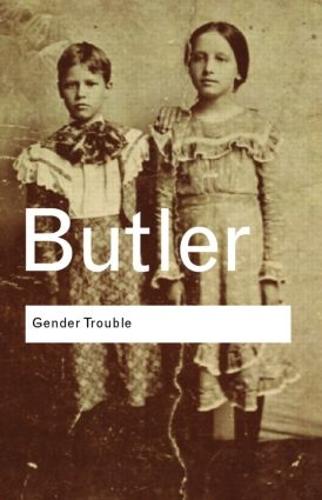Judith Butler describes gender as “an identity instituted through a stylized repetition of acts”. In other words, it is something learnt through repeated performance. How useful is this idea in understanding gender is represented in both the Score and Maybelline advertising campaigns?
My aim for this essay is to present all the knowledge about wave feminism and the gender as performance such as Butler and the representation of the two other CSPs Score and Maybelline. I will argue that looking at the construction of being male and female is all about civil rights and should be talked more about femininity.
I would suggest that gender as Performance by Butler is “Our gendered identities are not naturally given but constructed through repetition and ritual.” where individuals change their identities over and over again through the act of others. Judith Butler discusses the ideas of gender representation such as gender is fluid, changeable, and plural a set of categories to be played out and performed by individual subjects in individual moments in time and space. I would also suggest that feminist critical thinking emphasis on the differences among women due to race, ethnicity, class, nationality, religion and fluid and multiple subject positions and identities, therefore it suggests that in the mid 90’s they have low recognisable characteristics.
I would like to explain how theoretical approaches around gender, feminism and representation can be linked to the CSP’s.
First and foremost Mulvey gives us the idea that the male gaze is the act of depicting women and the world, in the visual arts which refers back to the 3rd wave feminists. Mulvey says “It is said that analysing pleasure, or beauty, destroys it.” for instance the female viewer must experience the narrative secondarily, with the male. Kilbourne also assumes the connection between the advertisements of women in public health issues which include violence , eating disorders and addiction. Woolf looks into the third wave feminism about the response of challenges and input about some of the definitions of femininity that grew out of that earlier period.
To begin with the theoretical ideas of Score, it considers its historical, social and cultural contexts, as it relates to gender roles, sexuality and the historical context of advertising techniques. The Score advert was produced in the year of decriminalisation of homosexuality and as such, the representation of heterosexuality could be read as signalling more anxiety than might first appear. Butler believes that there can be no gender identity as it can produce a series of effects as well as Woolf’s point on femininity.
Maybelline afterwards touches on the issue of gender representation, ethnicity and lifestyle. The ad, like its 1960s counterpart, uses an aspirational image showing two friends who do not conform to masculine and feminine ideals but are nonetheless powerful: happy in their own skin, confident in their bodies and their sexuality.
The historical knowledge about societal changes in 1967 as it relates to gender roles, sexuality and the historical context of advertising techniques. In 1967 it is believed to be a time of slow transformation in western cultures with legislation about changing women’s attitudes, along as men in society. This was a way to see the advert to be negotiated.
In the late 1960’s and between the early 1970’s, feminist critical thought became much more prominent where a greater acceptance of birth control and divorce, abortion and homosexuality was pronounced during the counter cultural movements.
I would like to announce the idea of the 2nd wave feminism to be approached by resulting in the term of second wave feminism which was directed by organisations.
Jonathon Dollimore gave the idea of ‘all this should not be seen as a straightforward displacement of dominant conservative attitudes‘, where in the early part of the 20th Century, the international alliance of women worked to get women the right to vote.
The Score advert was produced in the year of decriminalisation of homosexuality and as such, the representation of heterosexuality could be read as signalling more anxiety than might first appear. The reference to colonialist values can also be linked to social and cultural contexts of the ending of Empire. I believe they use a mixture of indexical symbols as it relates to a jungle as they are dressed in safari clothing and there is a platform where the material is a leopard which could suggest they are in a forest as they also have the bushes or trees behind them as there background.
After the recent demise of gay icon George Michael, several gay men had paid tribute to the singer recalling how he was a huge inspiration when they were growing up and helped make their coming out easier, furthermore Judith Butler suggests that that’s why people behave different so they fit into society. I also believe that in the Maybelline advert the whole campaign suggesting is youthful and empowering such as the slogans like ‘let’s get bossed out’. The advert emphasises a lot on the product itself. When watching the advert they try to approach by using the colour gold which illustrates how they are trying to make the product sound like it will shine your world and make you look very satisfactory towards others.
Referring back to Maybelline, society in nowadays makes the attempt to understand what it means to be oppressed as a woman. This is where the experiences of white middle-class or to ignore the completely experiences the other women occurred. The development and articulation of intersectionality began to take place because of this cause.
My counter argument is about Maybelline as I believe that their product doesn’t give the impression to attract the audience to buy the product. This is because noticing them in a new York apartment with some mascara in a golden luggage doesn’t engage the audience enough to know if it is a good product or not. In other words putting on mascara doesn’t change your whole appearance, therefore there should be no need for the colour gold to be shown throughout the advert.
The score post is more contradictory as its audience is aimed at the male gander suggesting that it is quite decriminalisation of homosexuality and as such, the representation of heterosexuality could be read as signalling more anxiety than might first appear. The idea that you will get what you have always wished for suggests that the 3 women at the back suggest that the man are getting their attention from them and the 2 women at the front suggest that they could be showing off on their looks and how lucky the man is which could also explain that the advert is sexualising them.
In terms of applying queer theory to feminist critical thought, Judith Butler, among others expressed doubt over the reductionist, essentialist, approach towards the binary oppositions presented in terms of the male and female gender.
Exploring the notion of intersectionality, it gives us the response that feminism is not universal, singular or homogeneous as it is a reductionist and essentialist way of seeing the world itself. Bell Hook shows us the way of exploring the ideas of the world by highlighting the concepts such as ‘female’, ‘feminist’, ‘feminine’, which approaches sexuality, class, age, education, religion and ability.
In conclusion, I was able to identify and explain the connections and representation about Score and Maybelline and its link towards Judith Butler and how feminism is shown.



